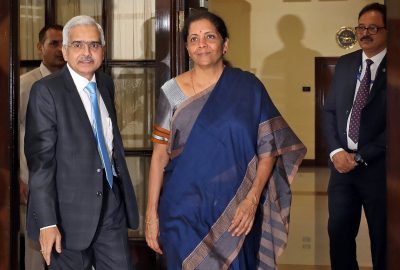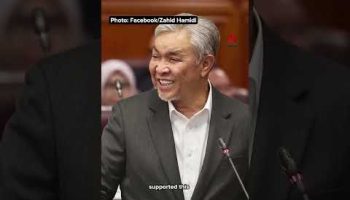Author: NR Bhanumurthy, National Institute of Public Finance and Policy
The government of India has set a new medium-term macro growth target, hoping the economy will grow to US$5 trillion by the end of 2024–25. Currently, it sits at US$2.3 trillion. The Economic Survey 2018–19 has estimated that India needs to grow at 8 per cent per annum in real terms — 12 per cent in nominal terms with 4 per cent inflation — as per the Reserve Bank of India’s (RBI) Flexible Inflation Targeting framework. This must be accompanied by a 0.7 per cent increase in total factor productivity.
 India has experienced such growth figures in the past so these requirements need not be major issues. But recent trends pose risks to achieving the target.
India has experienced such growth figures in the past so these requirements need not be major issues. But recent trends pose risks to achieving the target.
The growth rate in 2018–19 was 6.8 per cent. For the current year, many agencies — including the RBI, OECD and the World Bank — suggest that the growth rate could decelerate to about 6 per cent. This is attributed to global slowdown. IMF assessments indicate that the impact of the global slowdown could be more pronounced in India compared to other emerging economies.
The current slowdown is structural as well as cyclical. It also appears to be caused by both demand and supply-side factors. While the cyclical slowdown appears to be largely caused by both domestic and global factors, the structural slowdown appears to be a product of domestic factors. There is a need for policy measures that ensure economic revival both in the short-term to address cyclical slowdown, as well as in the medium-term to address structural slowdown.
The government and the RBI are trying to resurrect the economy. The RBI, with inflation well within the acceptable range, has already cut policy interest rates by 135 basis points. As expected, the transmission of this policy rate change to lending and deposit rates has been so far asymmetric — the transmission has been larger for deposit rates than it has been for lending rates. So monetary stimulus is failing to stimulate demand as expected — a transmission of about 29 basis points to retail loans against a reduction of policy interest rates by 110 basis points appears to have adversely affected savings.
The impact of this monetary response is at best neutral. This is why there is a greater need for fiscal action. Prior to the release of GDP growth figures for the first quarter of the current fiscal year — which turned out to be 5 per cent — the government was hesitant to use fiscal policy and was more concerned about containing the fiscal deficit within the statutorily fixed limits. But recently the government has taken measures through tax and industrial reform in an attempt to control the slowdown.
While these measures may help revive the economy, there is a sequencing issue. Given the nature of the slowdown, one should expect active fiscal policy and passive monetary policy — especially when the bank balance sheets are weak. In India, the response was the opposite. Now, monetary policy can no longer be used for dealing with unanticipated external and financial shocks.
The most important fiscal policy measure taken recently was the sharp reduction in corporate income tax rates to 22 per cent and 15 per cent for domestic companies and for new foreign and domestic companies respectively. This measure provides fiscal stimulus to domestic business through various channels and will create a level playing field for domestic and foreign entities. But various estimates suggest this measure may cost the treasury dearly.
Fiscal stimulus should help India attract more foreign investments in the medium term. Measures to attract more foreign investments should encourage economic recovery — especially while the domestic banking sector is weak. The government also continues to take various measures to provide more resources to the housing and export sectors, as well as crucial policy changes for the automobile sector.
While these measures should help India recover, there are many pending structural reforms — especially in factor and product markets — that needs to be looked at urgently if the country is to reach its target and achieve a US$5 trillion economy.
NR Bhanumurthy is Professor at the National Institute of Public Finance and Policy (NIPFP), Delhi.





